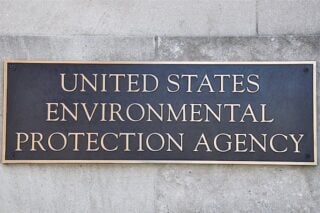According to the Montana Department of Environmental Quality (DEQ) and the U.S. Environmental Protection Agency (EPA), two units in the Libby Asbestos Superfund Site are moving toward partial deletion from the National Priorities List (NPL).
“As with anything in government, it takes longer than expected to get that in place, but I think we’re finally there,” said DEQ employee Lisa Dewitt. “And we’re getting contracts and mechanisms in place to get the site inspections completed by April.”
Unit 1 is the former export plant and unit 2 is the former screening plant. Before 1995, a site was not allowed to be deleted from the NPL until it was cleaned in its entirety. Due to a change in the partial deletion rule, only a smaller set of criteria must be reached for deletion.
According to the EPA, “Total site cleanup may take many years, while portions of the site may have been cleaned up and may be available for productive use.”
Libby’s mines were the main cause of becoming a Superfund Site. The vermiculite in the mines was contaminated with a deadly form of amphibole asbestos, known as tremolite. Tremolite is among the deadliest of all asbestos fibers and poses a danger to anyone inhaling it.
These units will be the first deletions from the NPL of any Superfund site in Montana. Both units are now being run by the Operations and Maintenance (O&M) Program and being managed by the Montana DEQ.
The program is a formulated plan of training, cleaning, work practices, and surveillance to minimize exposure to asbestos fibers.
“We’ve taken some time this last year to get a separate cooperative agreement put in place with the EPA so that [we] can access the pool of O&M money that was set aside,” stated Dewitt.
Libby has a long history leading up to these deletions. In August, another $1.7 million was received to help with all aspects of the cleanup. In October, a last call was given to residents to have their homes inspected and cleaned up if asbestos was found.
“I am in the midst of putting together all the draft documents we need for the deletion docket,” said EPA Remedial Project Manager Dania Zinner. “OU1 and 2 have everything in place to proceed toward partial deletion, except perhaps for an environmental covenant placed on OU1, which is the Riverfront Park.
The environmental covenant includes a property’s deed and lists its possible future land uses, plus, any restriction due to leftover encapsulated asbestos. Other deletion requirements are publishing notices in the federal register, holding a 30-day formal public comment period, and asking Montana for concurrence.
According to Zinner, the entire deletion process could take anywhere from 12 to 18 months.





